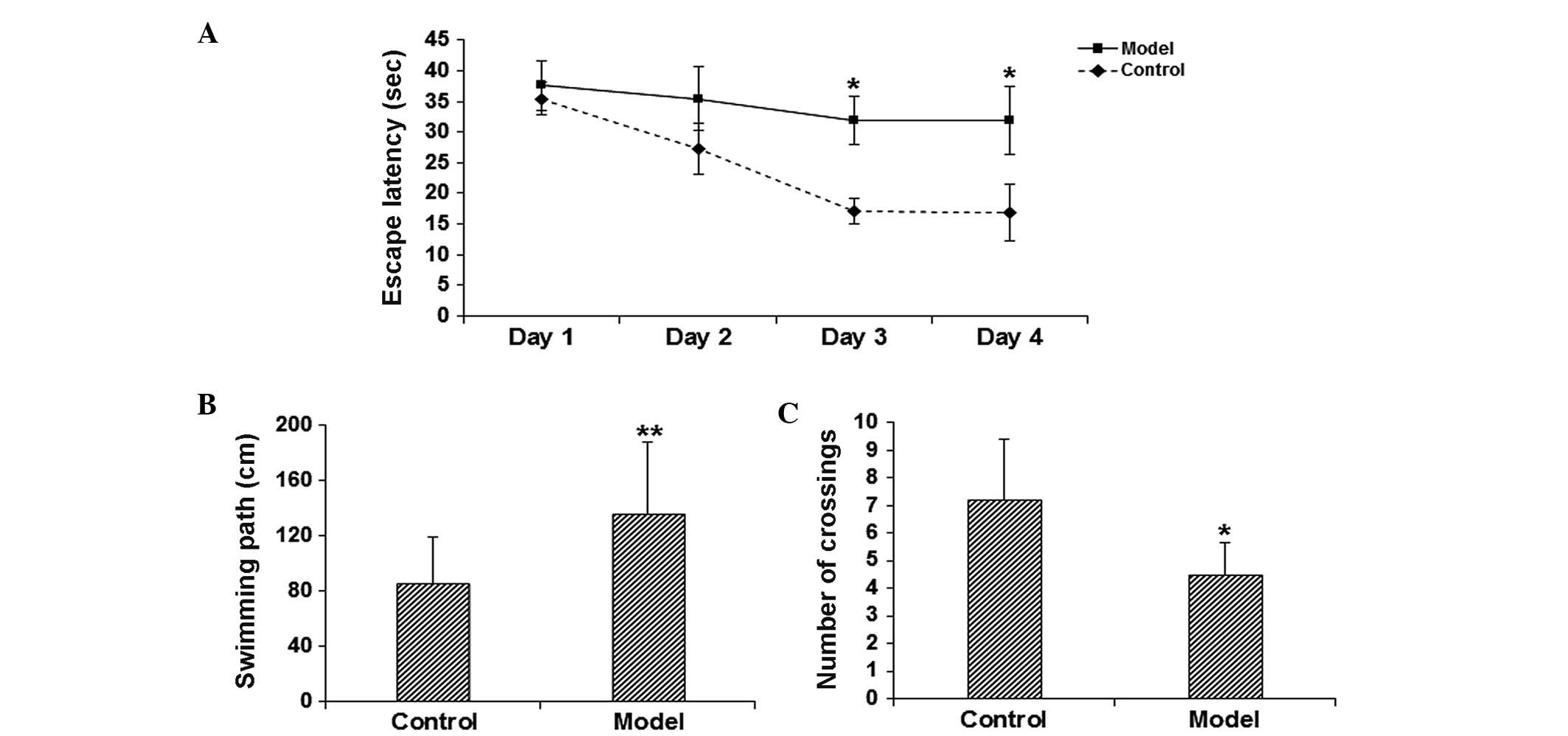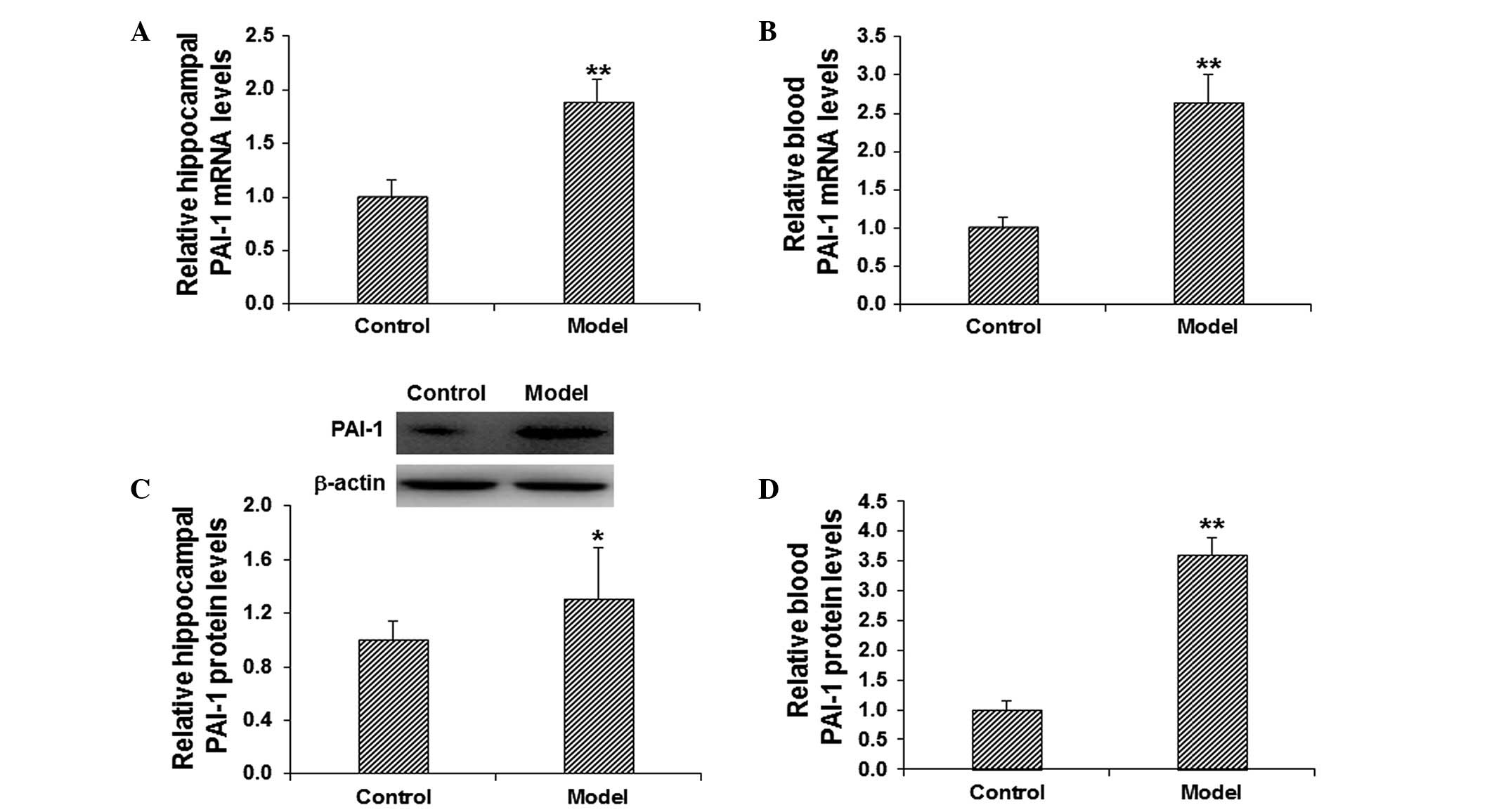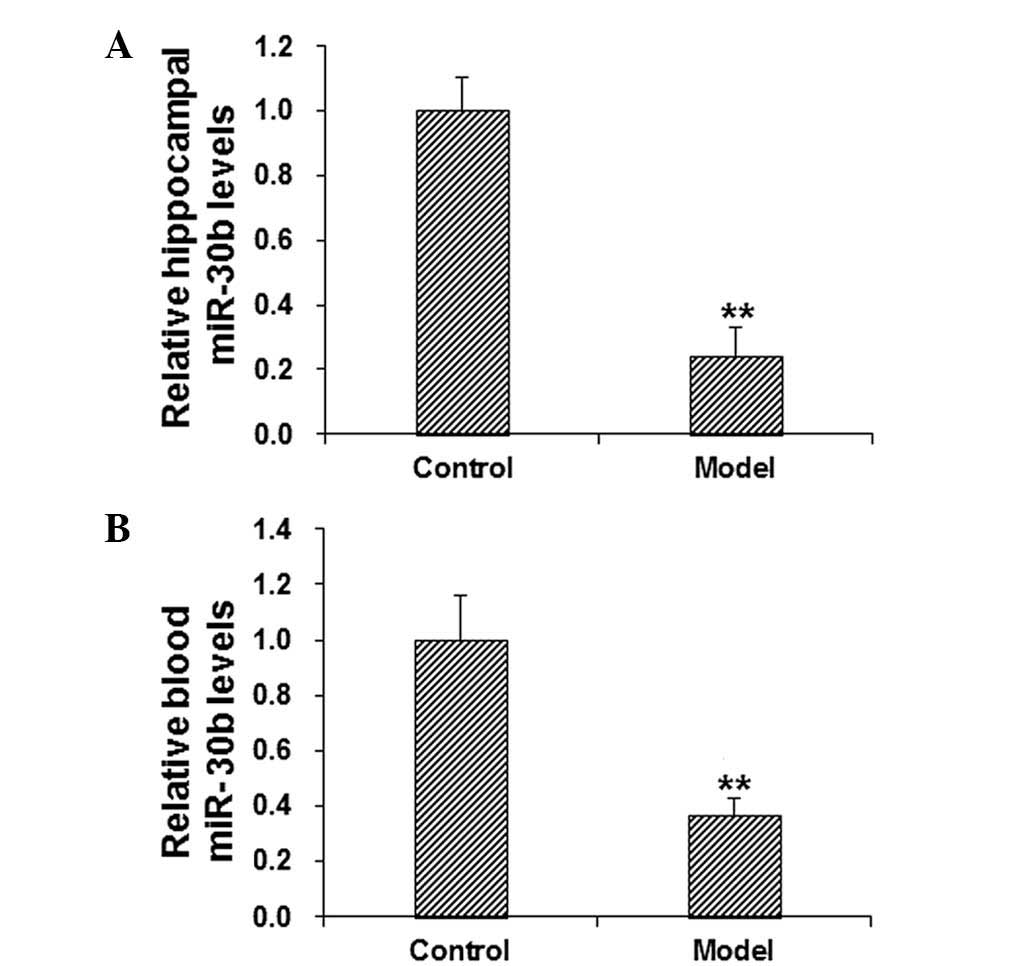|
1
|
Shen X, Li Y and Xu L: Correlation between
arterial microemboli and vascular cognitive impairment in patients
with acute cerebral infarction. Zhong Guo Lao Nian Xue Za Zhi She.
33:1400–1402. 2013.(In Chinese).
|
|
2
|
Miura R and Hattori H: Overview and
assessment of cognitive function in interpreting postoperative
cognitive dysfunction. Masui. 63:1188–1195. 2014.(In Japanese).
PubMed/NCBI
|
|
3
|
Li S, Okonkwo O, Albert M and Wang MC:
Variation in Variables that Predict Progression from MCI to AD
Dementia over Duration of Follow-up. Am J Alzheimers Dis
(Columbia). 2:12–28. 2013.PubMed/NCBI
|
|
4
|
Petrella JR: Neuroimaging and the search
for a cure for Alzheimer disease. Radiology. 269:671–691. 2013.
View Article : Google Scholar : PubMed/NCBI
|
|
5
|
de la Monte SM and Tong M: Brain metabolic
dysfunction at the core of Alzheimer's disease. Biochem Pharmacol.
88:548–559. 2014. View Article : Google Scholar : PubMed/NCBI
|
|
6
|
Banerjee G, Wilson D, Jäger HR and Werring
DJ: Novel imaging techniques in cerebral small vessel diseases and
vascular cognitive impairment. Biochim Biophys Acta.
10–Dec;2015.(Epub ahead of print).
|
|
7
|
Anisimova AV, Kolesnikova TI, Iutskova EV,
Galkin SS and Zimin IA: An impact of neuroprotective therapy on
blood rheological and morphodensitometric parameters in patients
with chronic cerebral ischemia. Zh Nevrol Psikhiatr Im S S
Korsakova. 114:72–80. 2014.(in Russian). PubMed/NCBI
|
|
8
|
Hua Y, Xi G, Keep RF, Wu J, Jiang Y and
Hoff JT: Plasminogen activator inhibitor-1 induction after
experimental intracerebral hemorrhage. J Cereb Blood Flow Metab.
22:55–61. 2002. View Article : Google Scholar : PubMed/NCBI
|
|
9
|
Kohler HP and Grant PJ:
Plasminogen-activator inhibitor type 1 and coronary artery disease.
N Engl J Med. 342:1792–1801. 2000. View Article : Google Scholar : PubMed/NCBI
|
|
10
|
Eitzman DT, Westrick RJ, Xu Z, Tyson J and
Ginsburg D: Plasminogen activator inhibitor-1 deficiency protects
against atherosclerosis progression in the mouse carotid artery.
Blood. 96:4212–4215. 2000.PubMed/NCBI
|
|
11
|
Zhu ED, Li N, Li BS, Li W, Zhang WJ, Mao
XH, Guo G, Zou QM and Xiao B: miR-30b, down-regulated in gastric
cancer, promotes apoptosis and suppresses tumor growth by targeting
plasminogen activator inhibitor-1. PLoS One. 9:e1060492014.
View Article : Google Scholar : PubMed/NCBI
|
|
12
|
Livak KJ and Schmittgen TD: Analysis of
relative gene expression data using real-tie quantitative PCR and
the 2(−Delta Delta C(T)) Method. Methods. 25:402–408. 2001.
View Article : Google Scholar : PubMed/NCBI
|
|
13
|
Hildreth KL and Church S: Evaluation and
management of the elderly patient presenting with cognitive
complaints. Med Clin North Am. 99:311–335. 2015. View Article : Google Scholar : PubMed/NCBI
|
|
14
|
Kapasi A and Schneider JA: Vascular
contributions to cognitive impairment, clinical Alzheimer's
disease, and dementia in older persons. Biochim Biophys Acta.
5–Jan;2016.(Epub ahead of print). View Article : Google Scholar : PubMed/NCBI
|
|
15
|
Mishra D, Sharma S, Gupta S, Das M and
Chauhan D: Acute cysticercal meningitis – missed diagnosis. Indian
J Pediatr. 73:835–837. 2006. View Article : Google Scholar : PubMed/NCBI
|
|
16
|
Armato U, Chakravarthy B, Pacchiana R and
Whitfield JF: Alzheimer's disease: An update of the roles of
receptors, astrocytes and primary cilia. Int J Mol Med. 31:3–10.
2013.PubMed/NCBI
|
|
17
|
Christie BR and Cameron HA: Neurogenesis
in the adult hippocampus. Hippocampus. 16:199–207. 2006. View Article : Google Scholar : PubMed/NCBI
|
|
18
|
Ikonomovic MD, Abrahamson EE, Isanski BA,
Wuu J, Mufson EJ and DeKosky ST: Superior frontal cortex
cholinergic axon density in mild cognitive impairment and early
Alzheimer disease. Arch Neurol. 64:1312–1317. 2007. View Article : Google Scholar : PubMed/NCBI
|
|
19
|
Ortega A, del Guante MA, Prado-Alcalá RA
and Alemán V: Changes in rat brain muscarinic receptors after
inhibitory avoidance learning. Life Sci. 58:799–809. 1996.
View Article : Google Scholar : PubMed/NCBI
|
|
20
|
Jean L, Thomas B, Tahiri-Alaoui A, Shaw M
and Vaux DJ: Heterologous amyloid seeding: Revisiting the role of
acetylcholinesterase in Alzheimer's disease. PLoS One. 2:e652–e660.
2007. View Article : Google Scholar : PubMed/NCBI
|
|
21
|
Geula C, Nagykery N, Nicholas A and Wu CK:
Cholinergic neuronal and axonal abnormalities are present early in
aging and in Alzheimer disease. J Neuropathol Exp Neurol.
67:309–318. 2008. View Article : Google Scholar : PubMed/NCBI
|
|
22
|
Minger SL, Esiri MM, McDonald B, Keene J,
Carter J, Hope T and Francis PT: Cholinergic deficits contribute to
behavioral disturbance in patients with dementia. Neurology.
55:1460–1467. 2000. View Article : Google Scholar : PubMed/NCBI
|
|
23
|
Erren M, Reinecke H, Junker R, Fobker M,
Schulte H, Schurek JO, Kropf J, Kerber S, Breithardt G, Assmann G
and Cullen P: Systemic inflammatory parameters in patients with
atherosclerosis of the coronary and peripheral arteries.
Arterioscler Thromb Vasc Biol. 19:2355–2363. 1999. View Article : Google Scholar : PubMed/NCBI
|
|
24
|
Hamsten A, de Faire U, Walldius G, Dahlén
G, Szamosi A, Landou C, Blombäck M and Wiman B: Plasminogen
activator inhibitor in plasma: Risk factor for recurrent myocardial
infarction. Lancet. 2:3–9. 1987. View Article : Google Scholar : PubMed/NCBI
|
|
25
|
Thögersen AM, Jansson JH, Boman K, Nilsson
TK, Weinehall L, Huhtasaari F and Hallmans G: High plasminogen
activator inhibitor and tissue plasminogen activator levels in
plasma precede a first acute myocardial infarction in both men and
women: Evidence for the fibrinolytic system as an independent
primary risk factor. Circulation. 98:2241–2247. 1998. View Article : Google Scholar : PubMed/NCBI
|
|
26
|
Lupu F, Bergonzelli GE, Heim DA, Cousin E,
Genton CY, Bachmann F and Kruithof EK: Localization and production
of plasminogen activator inhibitor-1 in human healthy and
atherosclerotic arteries. Arterioscler Thromb. 13:1090–1100. 1993.
View Article : Google Scholar : PubMed/NCBI
|
|
27
|
Lupu F, Heim DA, Bachmann F, Hurni M,
Kakkar VV and Kruithof EK: Plasminogen activator expression in
human atherosclerotic lesions. Arterioscler Thromb Vasc Biol.
15:1444–1455. 1995. View Article : Google Scholar : PubMed/NCBI
|
|
28
|
Olexa P and Olexová M: Plasminogen
activator inhibitor-l (PAI-1), ischemic heart disease and diabetes
mellitus. Vnitr Lek. 49:222–226. 2003.(In Slovak). PubMed/NCBI
|
|
29
|
Rouch A, Vanucci-Bacqué C, Bedos-Belval F
and Baltas M: Small molecules inhibitors of plasminogen activator
inhibitor-1 - an overview. Eur J Med Chem. 92:619–636. 2015.
View Article : Google Scholar : PubMed/NCBI
|
|
30
|
Jokinen H, Gonçalves N, Vigário R,
Lipsanen J, Fazekas F, Schmidt R, Barkhof F, Madureira S, Verdelho
A, Inzitari D, et al: Early-stage white matter lesions detected by
multispectral MRI segmentation predict progressive cognitive
decline. Front Neurosci. 9:4552015. View Article : Google Scholar : PubMed/NCBI
|
|
31
|
Matsuura Y, Yamashita A, Iwakiri T, Sugita
C, Okuyama N, Kitamura K and Asada Y: Vascular wall hypoxia
promotes arterial thrombus formation via augmentation of vascular
thrombogenicity. Thromb Haemost. 114:158–172. 2015. View Article : Google Scholar : PubMed/NCBI
|
|
32
|
Inoue K: MicroRNA function in animal
development. Tanpakushitsu Kakusan Koso. 52:197–204. 2007.(In
Japanese). PubMed/NCBI
|
|
33
|
Williams AE, Moschos SA, Perry MM, Barnes
PJ and Lindsay MA: Maternally imprinted microRNAs are
differentially expressed during mouse and human lung development.
Dev Dyn. 236:572–580. 2007. View Article : Google Scholar : PubMed/NCBI
|
|
34
|
Li X, Yu Z, Li Y, Liu S, Gao C, Hou X, Yao
R and Cui L: The tumor suppressor miR-124 inhibits cell
proliferation by targeting STAT3 and functions as a prognostic
marker for postoperative NSCLC patients. Int J Oncol. 46:798–808.
2015.PubMed/NCBI
|
|
35
|
Lv ZC, Fan YS, Chen HB and Zhao DW:
Investigation of microRNA-155 as a serum diagnostic and prognostic
biomarker for colorectal cancer. Tumour Biol. 36:1619–1625. 2015.
View Article : Google Scholar : PubMed/NCBI
|
|
36
|
Mellios N, Galdzicka M, Ginns E, Baker SP,
Rogaev E, Xu J and Akbarian S: Gender-specific reduction of
estrogen-sensitive small RNA, miR-30b, in subjects with
schizophrenia. Schizophr Bull. 38:433–443. 2012. View Article : Google Scholar : PubMed/NCBI
|


















